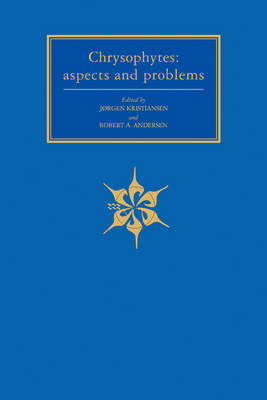
Chrysophytes
Cambridge University Press (Verlag)
978-0-521-18007-8 (ISBN)
Originally published in 1986, this book presents an in-depth treatment of the biology of the chrysophytes. The papers collected here are a result of the First International Chrysophyte Symposium held at the University of North Dakota in 1953. The 'golden algae', a group of predominantly fresh water microorganisms, have distinctive features that present much information about their taxonomic classification, their place in evolution and their role in the environment. The ecological significance of the chrysophytes is evident from their abundance in acid bogs and lakes, a condition that has created a new group of investigators concerned with these unique algae and the changing environment. These are just some of the aspects of chrysophyte biology that are discussed here. This book provides a strong foundation towards understanding today's living forms of chrysophyte algae and sheds light on the probable aquatic ecosystems of the past.
Preface; Titles of other papers from the symposium; List of contributors; Part I. Definition and Relationships: 1. The Chrysophyta - a reassessment Frank E. Round; 2. Ultrastructure of the Chrysophyceae - phylogenetic implications and taxonomy David J. Hibberd; 3. A survey of the marine Chrysophyceae with special reference to the Sarcinochrysidales Paulette Gayral and Chantal Billard; 4. The actinophryid heliozoa (Sarcodina, Actinopoda) as chromophytes David J. Patterson; Part II. Taxonomy: 5. Classification of four general of Chrysophyceae bearing silica scales in a family separate from Maollomonas and Synura Hans R. Preisig and David J. Hibberd; 6. A proposed phylogenetic sequence for the loricate rhizopodial Chysophyceae Richard L. Meyer; 7. New species of the genus Mallomonas (Mallomonadacear, Chrysophyceae) from New Zealand Monika Dürrschmidt; 8. Some new observations of Saccochrysis piriformis Korsh. emend. Anderson (Chrysophyceae) Robert A. Anderson; Part III. Cell Biology: 9. Scale case construction in Synura petersenii Korsh. (Chrysophyceae) Annette W. Coleman; 11. Chloroplast DNA in the Chrysophyceae: copy number, packaging, and gene expression in Olisthodiscus luteus Rose Ann Cattolico, Jane Aldrich, Steven Bressler, Duncan Ersland-Talbot, Scott Newman, and Michael Reith; Part IV. Population Dynamics: 12. Phytoplankton dynamics in a chrysophycean lake Peter A. Siver and K. S. Chock; 13. Blooms of Uroglena americana in relation to concentrations of B group vitamins Akira Kurata; 14. Light quality effects on carbon and sulphur uptake of a metalimnetic population of the colonical chrysophyte Chrysosphaerella longispina Frances R. Pick and R. L. Cuhel; 15. Effects of environmental temperature on the vegetative growth and sexual life history of Dinobryon cylindricum Imhof Craig D. Dandgren; Part V. Ecology and Biogeography: 16. Identification, ecology, and distribution of a silica-scale-bearing Chrysophyceae, a critical approach Jørgen Kristiansen; 17. Development and succession of scale-bearing Chrysophyceae in two shallow freshwater bodies near Nijmegen, The Netherlands R. M. M. Roijackers; 18. Chromophysomonas (Chrysophyceae) from twenty-seven localities in the Oslo area Absjørn Skogstad; Part VI. Paleobiology: 19. Scale microfossils of Early Cambrian age from Canada Carol Wagner Allison and Jerry W. Hilgert; 20. Chrysophycean cysts and scales in lake sediments: a review Gertrud Cronberg; 21. A proposal for the development of standardized nomenclature and terminology for chrysopycean statospores Gertrud Cronberg and Craig D. Sandgren; Index.
| Zusatzinfo | Worked examples or Exercises |
|---|---|
| Verlagsort | Cambridge |
| Sprache | englisch |
| Maße | 152 x 229 mm |
| Gewicht | 520 g |
| Themenwelt | Naturwissenschaften ► Biologie ► Botanik |
| ISBN-10 | 0-521-18007-4 / 0521180074 |
| ISBN-13 | 978-0-521-18007-8 / 9780521180078 |
| Zustand | Neuware |
| Haben Sie eine Frage zum Produkt? |
aus dem Bereich


